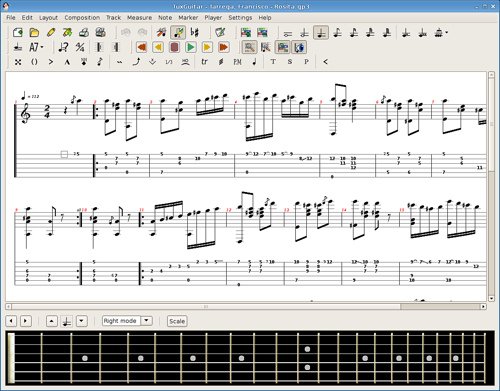|
Service Provider Interface
Service provider interface (SPI) is an API intended to be implemented or extended by a third party. It can be used to enable framework extension and replaceable components. Details From Java documentation: The concept can be extended to other platforms using the corresponding tools. In the Java Runtime Environment, SPIs are used in: *Java Database Connectivity * Java Cryptography Extension * Java Naming and Directory Interface * Java API for XML Processing * Java Business Integration *Java Sound *Java Image I/O *Java File Systems See also *Plug-in (computing) *Java (programming language) *Java (software platform) References External linksReplaceable Components and the Service Provider Interface(.pdf at The Software Engineering Institute Software Engineering Institute (SEI) is a Federally funded research and development centers, federally funded research and development center in Pittsburgh, Pennsylvania, United States. Founded in 1984, the institute is now sponsored by th ... [...More Info...] [...Related Items...] OR: [Wikipedia] [Google] [Baidu] |
|
 |
Application Programming Interface
An application programming interface (API) is a connection between computers or between computer programs. It is a type of software Interface (computing), interface, offering a service to other pieces of software. A document or standard that describes how to build such a connection or interface is called an ''API specification''. A computer system that meets this standard is said to ''implement'' or ''expose'' an API. The term API may refer either to the specification or to the implementation. In contrast to a user interface, which connects a computer to a person, an application programming interface connects computers or pieces of software to each other. It is not intended to be used directly by a person (the end user) other than a computer programmer who is incorporating it into software. An API is often made up of different parts which act as tools or services that are available to the programmer. A program or a programmer that uses one of these parts is said to ''call'' that ... [...More Info...] [...Related Items...] OR: [Wikipedia] [Google] [Baidu] |
 |
Java Runtime Environment
Java is a set of computer software and specifications that provides a software platform for developing application software and deploying it in a cross-platform computing environment. Java is used in a wide variety of computing platforms from embedded devices and mobile phones to enterprise servers and supercomputers. Java applets, which are less common than standalone Java applications, were commonly run in secure, sandboxed environments to provide many features of native applications through being embedded in HTML pages. Writing in the Java programming language is the primary way to produce code that will be deployed as byte code in a Java virtual machine (JVM); byte code compilers are also available for other languages, including Ada, JavaScript, Kotlin (Google's preferred Android language), Python, and Ruby. In addition, several languages have been designed to run natively on the JVM, including Clojure, Groovy, and Scala. Java syntax borrows heavily from C and ... [...More Info...] [...Related Items...] OR: [Wikipedia] [Google] [Baidu] |
|
Java Database Connectivity
Java Database Connectivity (JDBC) is an application programming interface (API) for the Java programming language which defines how a client may access a database. It is a Java-based data access technology used for Java database connectivity. It is part of the Java Standard Edition platform, from Oracle Corporation. It provides methods to query and update data in a database, and is oriented toward relational databases. A JDBC-to-ODBC bridge enables connections to any ODBC-accessible data source in the Java virtual machine (JVM) host environment. History and implementation Sun Microsystems released JDBC as part of Java Development Kit (JDK) 1.1 on February 19, 1997. Since then it has been part of the Java Platform, Standard Edition (Java SE). The JDBC classes are contained in the Java package and . Starting with version 3.1, JDBC has been developed under the Java Community Process. JSR 54 specifies JDBC 3.0 (included in J2SE 1.4), JSR 114 specifies the JDBC Rowset additions, a ... [...More Info...] [...Related Items...] OR: [Wikipedia] [Google] [Baidu] |
|
|
Java Cryptography Extension
The Java Cryptography Extension (JCE) is an officially released Standard Extension to the Java Platform and part of Java Cryptography Architecture (JCA). JCE provides a framework and implementation for encryption, key generation and key agreement, and Message Authentication Code In cryptography, a message authentication code (MAC), sometimes known as an authentication tag, is a short piece of information used for authentication, authenticating and Data integrity, integrity-checking a message. In other words, it is used t ... (MAC) algorithms. JCE supplements the Java platform, which already includes interfaces and implementations of message digests and digital signatures. Installation is specific to the version of the Java Platform being used, with downloads available foJava 6 an [...More Info...] [...Related Items...] OR: [Wikipedia] [Google] [Baidu] |
|
|
Java Naming And Directory Interface
The Java Naming and Directory Interface (JNDI) is a Java API for a directory service that allows Java software clients to discover and look up data and resources (in the form of Java objects) via a name. Like all Java APIs that interface with host systems, JNDI is independent of the underlying implementation. Additionally, it specifies a service provider interface (SPI) that allows directory service implementations to be plugged into the framework. The information looked up via JNDI may be supplied by a server, a flat file, or a database; the choice is up to the implementation used. Typical uses of JNDI include: * connecting a Java application to an external directory service (such as an address database or an LDAP server) * allowing a Java Servlet to look up configuration information provided by the hosting web container Background The Java RMI and Java EE APIs use the JNDI API to look up objects in a network. The API provides: * a mechanism to bind an object to a name * a dir ... [...More Info...] [...Related Items...] OR: [Wikipedia] [Google] [Baidu] |
|
|
Java API For XML Processing
In computing, the Java API for XML Processing (JAXP) ( ), one of the Java XML application programming interfaces (APIs), provides the capability of validating and parsing XML documents. It has three basic parsing interfaces: * the Document Object Model parsing interface or DOM interface * the Simple API for XML parsing interface or SAX interface * the Streaming API for XML or StAX interface (part of JDK 6; separate jar available for JDK 5) In addition to the parsing interfaces, the API provides an XSLT interface to provide data and structural transformations on an XML document. JAXP was developed under the Java Community Process as JSR 5 (JAXP 1.0), JSR 63 (JAXP 1.1 and 1.2), and JSR 206 (JAXP 1.3). JAXP version 1.4.4 was released on September 3, 2010. JAXP 1.3 was declareend-of-lifeon February 12, 2008. DOM interface The DOM interface parses an entire XML document and constructs a complete in-memory representation of the document using the classes and modeling the conce ... [...More Info...] [...Related Items...] OR: [Wikipedia] [Google] [Baidu] |
|
|
Java Business Integration
Java Business Integration (JBI) is a specification developed under the Java Community Process (JCP) for an approach to implementing a service-oriented architecture (SOA). The JCP reference is JSR 208 for JBI 1.0 and JSR 312 for JBI 2.0. JSR 312 was removed from the JCP balloting process on 17 Dec, 2010 by the submitters without being accepted. JBI is built on a Web Services model and provides a pluggable architecture for a container that hosts service producer and consumer components. Services connect to the container via binding components (BC) or can be hosted inside the container as part of a service engine (SE). The services model used is Web Services Description Language 2.0. The central message delivery mechanism, the normalized message router (NMR), delivers normalized messages via one of four Message Exchange Patterns (MEPs), taken from WSDL 2.0: # In-Only: A standard one-way messaging exchange where the consumer sends a message to the provider that provides only a status ... [...More Info...] [...Related Items...] OR: [Wikipedia] [Google] [Baidu] |
|
|
Plug-in (computing)
In computing, a plug-in (also spelled plugin) or add-in (also addin, add-on, or addon) is a software component that extends the functionality of an existing software system without requiring the system to be software build, re-built. A plug-in software feature, feature is one way that a system can be customizable. Applications support plug-ins for a variety of reasons including: * Enable third-party developers to extend an application * Support easily adding new features * Reduce the size of an application by not loading unused features * Separate source code from an application because of incompatible software licenses Examples Examples of plug-in use for various categories of applications: * Digital audio workstations and audio editing software use audio plug-ins to generate, process or analyze sound. Ardour (software), Ardour, Audacity (audio editor), Audacity, Cubase, FL Studio, Logic Pro, Logic Pro X and Pro Tools are examples of such systems. * Email clients use plug-i ... [...More Info...] [...Related Items...] OR: [Wikipedia] [Google] [Baidu] |
|
 |
Java (programming Language)
Java is a High-level programming language, high-level, General-purpose programming language, general-purpose, Memory safety, memory-safe, object-oriented programming, object-oriented programming language. It is intended to let programmers ''write once, run anywhere'' (Write once, run anywhere, WORA), meaning that compiler, compiled Java code can run on all platforms that support Java without the need to recompile. Java applications are typically compiled to Java bytecode, bytecode that can run on any Java virtual machine (JVM) regardless of the underlying computer architecture. The syntax (programming languages), syntax of Java is similar to C (programming language), C and C++, but has fewer low-level programming language, low-level facilities than either of them. The Java runtime provides dynamic capabilities (such as Reflective programming, reflection and runtime code modification) that are typically not available in traditional compiled languages. Java gained popularity sh ... [...More Info...] [...Related Items...] OR: [Wikipedia] [Google] [Baidu] |
 |
Java (software Platform)
Java is a set of computer software and specifications that provides a software platform for developing application software and deploying it in a cross-platform computing environment. Java is used in a wide variety of computing platforms from embedded devices and mobile phones to enterprise servers and supercomputers. Java applets, which are less common than standalone Java applications, were commonly run in secure, Sandbox (computer security), sandboxed environments to provide many features of native applications through being embedded in HTML pages. Writing in the Java (programming language), Java programming language is the primary way to produce code that will be deployed as Java byte code, byte code in a Java virtual machine (JVM); byte code compilers are also available for other languages, including Ada (programming language), Ada, JavaScript, Kotlin (programming language), Kotlin (Google's preferred Android language), Python (programming language), Python, and Ruby (p ... [...More Info...] [...Related Items...] OR: [Wikipedia] [Google] [Baidu] |
 |
Software Engineering Institute
Software Engineering Institute (SEI) is a Federally funded research and development centers, federally funded research and development center in Pittsburgh, Pennsylvania, United States. Founded in 1984, the institute is now sponsored by the United States Department of Defense and the Under Secretary of Defense for Research and Engineering, Office of the Under Secretary of Defense for Research and Engineering, and administrated by Carnegie Mellon University. The activities of the institute cover cybersecurity, software assurance, software engineering and acquisition, and component capabilities critical to the United States Department of Defense. Authority The Carnegie Mellon Software Engineering Institute is a federally funded research and development center headquartered on the campus of Carnegie Mellon University in Pittsburgh, Pennsylvania, United States. The SEI also has offices in Washington, DC; Arlington County, Virginia; and Los Angeles, California. The SEI operates wi ... [...More Info...] [...Related Items...] OR: [Wikipedia] [Google] [Baidu] |
 |
Carnegie Mellon University
Carnegie Mellon University (CMU) is a private research university in Pittsburgh, Pennsylvania, United States. The institution was established in 1900 by Andrew Carnegie as the Carnegie Technical Schools. In 1912, it became the Carnegie Institute of Technology and began granting four-year degrees. In 1967, it became Carnegie Mellon University through its merger with the Mellon Institute of Industrial Research, founded in 1913 by Andrew Mellon and Richard B. Mellon and formerly a part of the University of Pittsburgh. The university consists of seven colleges, including the College of Engineering, the School of Computer Science, and the Tepper School of Business. The university has its main campus located 5 miles (8 km) from downtown Pittsburgh. It also has over a dozen degree-granting locations in six continents, including campuses in Qatar, Silicon Valley, and Kigali, Rwanda ( Carnegie Mellon University Africa) and partnerships with universities nationally and glob ... [...More Info...] [...Related Items...] OR: [Wikipedia] [Google] [Baidu] |